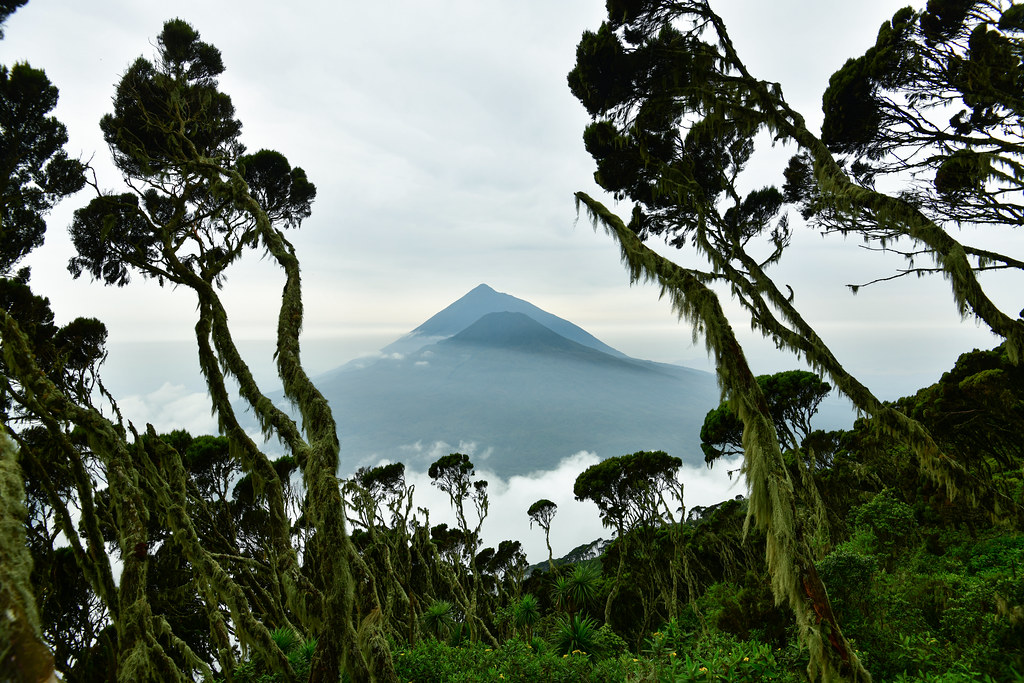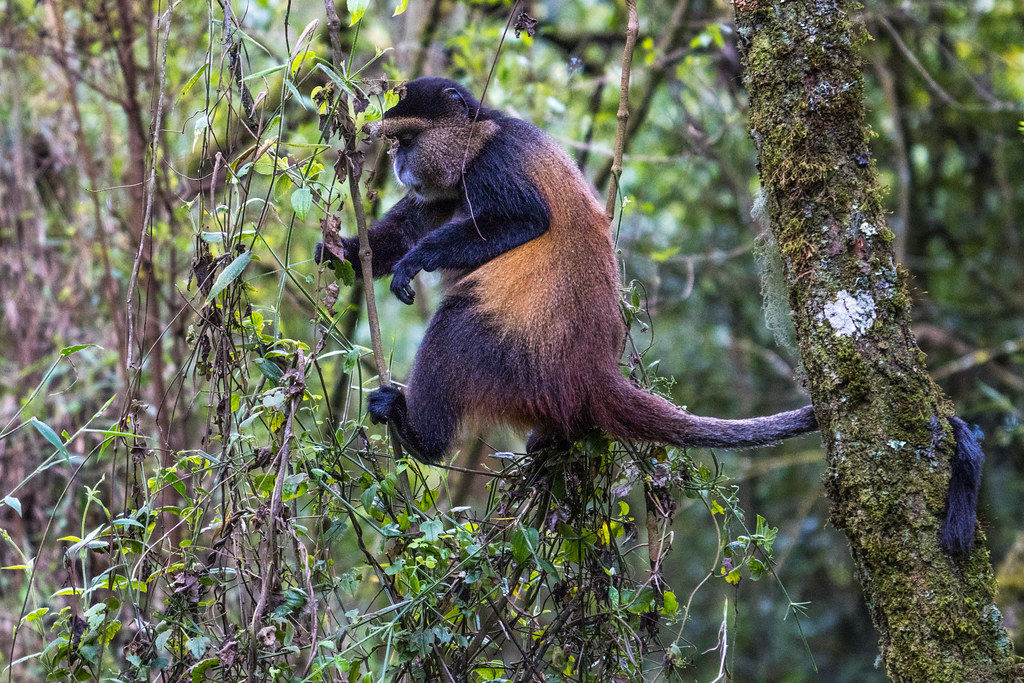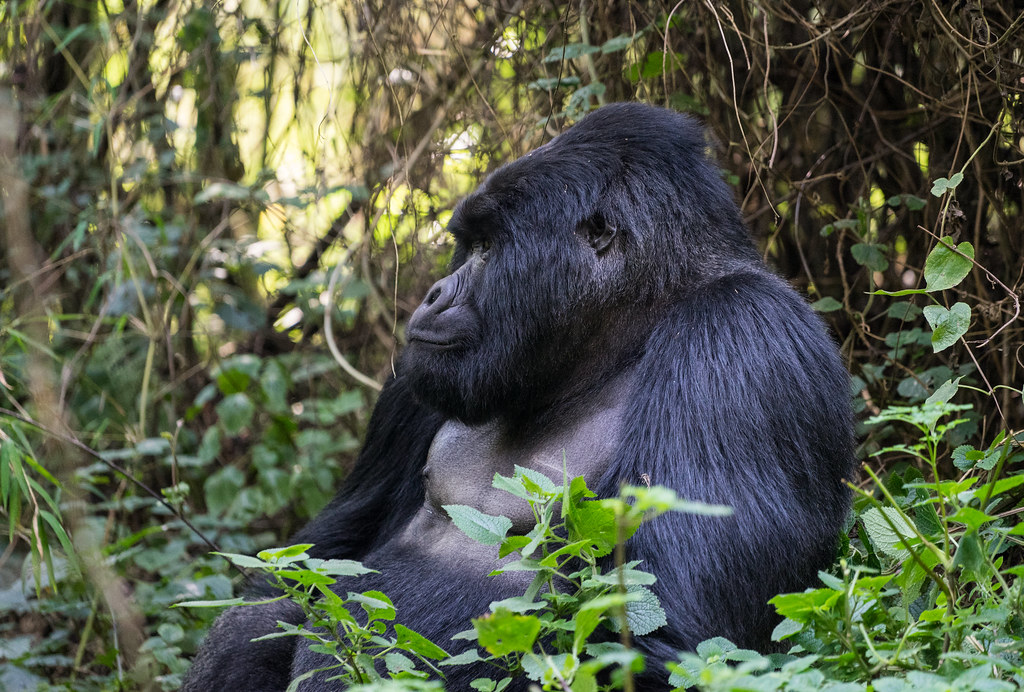 Mgahinga National Park
Mgahinga National Park
Mgahinga national park is the smallest national park in Uganda covering only 33.7sqkm. It was declared a reserve in 1930 and then later turned in a national park in 1991. It is found in the south west of Uganda along Uganda’s border with Dr.Congo and Rwanda the three countries that share the Virunga Mountain ranges. This park gets its name from the local word Gahinga which means piles of volcanic stones which are everywhere along the foot hills of all the different volcanoes in the area.
Mgahinga national park is blessed with its own unique and extremely striking features that you cannot find in any other park for example the three conical, there are those extinct volcanoes and the fact that this park is part of the famous Virunga Ranges thus forming the Virunga conservation area. The Mgahinga forest goes across borders into Congo forming Congo’s Virunga national park and into Rwanda forming its Volcanoes national park. Therefore these 3 countries do share most of the wildlife and vegetation found within. This park lies high up in the clouds at an altitude ranging from 2,227m and 4,127m. Given the nature of this park, it is blessed with a really rich ecosystem especially along the mountains slopes and this is coupled with biological diversity. From the top of the mountain, one gets to have an amazing view of the gorgeous scenery. Being a mountainous park, it has got types of vegetation covers that grow depending on the different altitudinal zones. There are bamboo forests, the Albertine rift endemic montane forests, at some points you will find the Ruwenzori Virunga montane moorlands and from the higher altitudes you will find the Alpine kind of vegetation.
 Mgahinga National Park’s ecosystem and biodiversity encourages the survival of about 76 different species of mammal and birds too. The park is therefore known for being a home to several primate species but mostly the mountain gorillas and golden monkeys. Mgahinga has got both the unhabituated gorillas and a habituated a transboundary mountain gorilla group that they sometimes cross from one country to another. You can therefore plan a mountain gorilla tracking adventure in Mgahinga national park. Other than the gorillas, there are also habituated golden monkeys and this is the only place where golden monkey tracking is done in Uganda. A primate’s tour in Mgahinga gives a chance to meet more than just the gorillas and golden monkeys. There are other primates like the baboons, black and white colobus monkeys, vevert monkeys, among others.
Mgahinga National Park’s ecosystem and biodiversity encourages the survival of about 76 different species of mammal and birds too. The park is therefore known for being a home to several primate species but mostly the mountain gorillas and golden monkeys. Mgahinga has got both the unhabituated gorillas and a habituated a transboundary mountain gorilla group that they sometimes cross from one country to another. You can therefore plan a mountain gorilla tracking adventure in Mgahinga national park. Other than the gorillas, there are also habituated golden monkeys and this is the only place where golden monkey tracking is done in Uganda. A primate’s tour in Mgahinga gives a chance to meet more than just the gorillas and golden monkeys. There are other primates like the baboons, black and white colobus monkeys, vevert monkeys, among others.
The forest is also a home to other wildlife species like giant forest hogs, the black fronted duikers, a few types of antelopes like bushbucks, there are bush pigs and sometimes a leopard and forest elephants may be spotted. There are rodents like rats, so many bats are often seen hanging on trees and so many different small predators.
Bird watchers will also find Mgahinga an interesting place that is worth visiting because there are more than 180bird species and these 14 species that are endemic to the Albertine rift. There are birds like the stripe breasted tits, regal sunbirds, Rwenzori doubled collared sunbird, red throated alethe, red faced woodland warbler, callared apalis, among so many others.
Mgahinga national park is not only good for primates and bird watching. It is also a great destination for cultural tours because it is surrounded by interesting communities with rich cultures that you will definitely want to explore and learn about. The Batwa people or the pygmies as they are worldly known who are the indigenous people of this area are very welcoming and do share stories about the lifestyle and cultures with visitor to the area. You will learn that these people are originally merely hunter and fruit gatherers therefore solely depended on the forest. A cultural tour around the local community will give you a chance to experience firsthand the Batwa’s life style and they can even walk with you to the jungle to show you how exactly they used to survive before the conservation efforts that forced them out of the forest.
The Batwa people are said to have been self-sufficient and you will see how that was during ayour tour with the Batwa guide.

